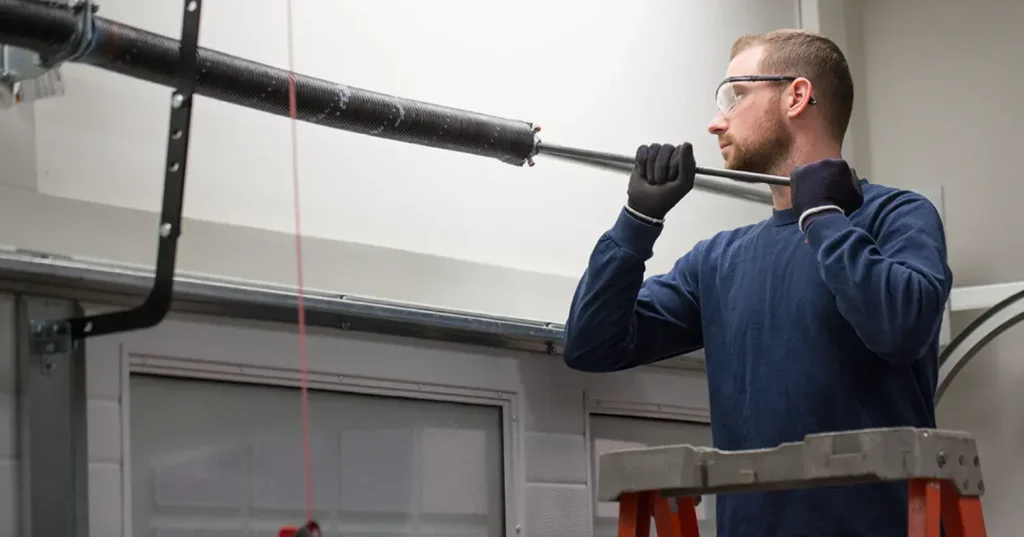The task of replacing garage door springs, while seemingly straightforward, involves significant risk without proper precautions and knowledge. Key to ensuring both personal safety and the functional integrity of the garage door is understanding the specifics: torsion versus extension springs, each requiring different techniques and tools. Engaging in this maintenance task demands not only mechanical aptitude but also a strict adherence to safety protocols such as securing the garage door in a fixed position and disconnecting the power supply to avoid unexpected movements. While these initial steps form the bedrock of safety, the nuances of garage door spring replacement, correct installation, and calibration may hold further critical considerations, underscoring why detailed guidance is indispensable for anyone undertaking this task.
Essential Safety Guidelines
Addressing safety measures preempts potential accidents when replacing garage door springs, a task fraught with significant risk due to the high tension involved. It is important to first understand the type of springs your garage door uses—torsion or extension—since each requires different handling and precautions.
Proper knowledge of the tools and methods is not just recommended, it is necessary. Begin by ensuring all tools and replacement springs are of the correct specifications and in good working order. A winding bar, appropriate for torsion springs, must be solid and fit snugly into the winding cone holes. For extension springs, safety cables are essential as they prevent the spring from becoming a projectile in case of a breakage.
Always wear eye protection and heavy-duty gloves to shield against possible snap-back from a spring under tension. Securing the garage door before starting is important. It should be in the fully open position, supported by a sturdy C-clamp on the track below the bottom roller, preventing any accidental closing.
Common Mistakes to Avoid
While meticulous adherence to safety guidelines greatly reduces the risks associated with garage door spring replacement, it’s equally important to be aware of common mistakes that can still lead to accidents or further damage.
One prevalent error is attempting the replacement without the proper tools. Specialized tools, such as winding bars and vise grips, are essential for safe installation and adjustment of torsion springs. Using improper tools can cause the springs to snap or slip, resulting in injury.
Another mistake is working on a garage door with the power still connected. Always make sure that the power supply is disconnected to prevent any unexpected movement of the door while you’re working on it.
Additionally, some homeowners mistakenly replace only the broken spring. It’s advisable to replace both springs at the same time, as they wear out at similar rates. Doing so not only promotes balanced operation but also prevents the undue strain that can lead to future failures.
Lastly, neglecting to check the balance of the door post-replacement is a common oversight. An unbalanced garage door can lead to excessive wear and tear on the motor and the springs. Always perform a balance check and make necessary adjustments after installing new springs to ensure peak performance and longevity.

